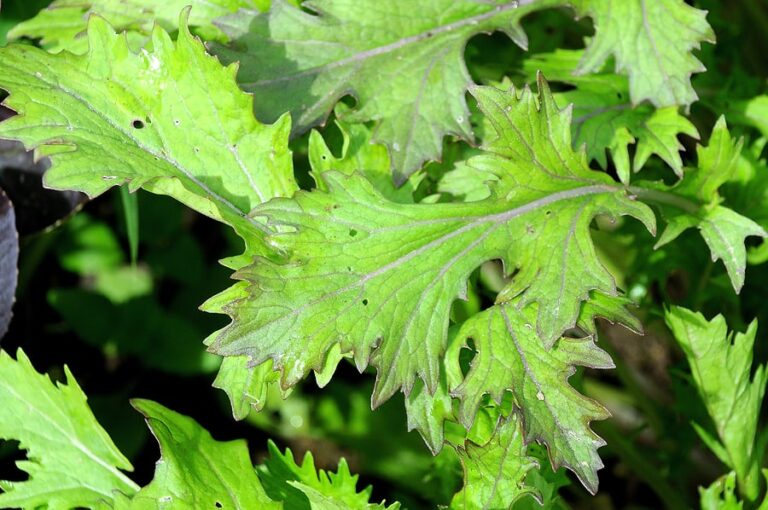Best Soil and Site Conditions for Napa Cabbage
Napa cabbage (also called Chinese cabbage) forms its crisp, tightly packed heads only when grown in the right soil and site conditions. After decades of growing Asian brassicas in both spring and fall, I’ve learned that Napa cabbage is far more sensitive to soil texture, fertility, and temperature than many gardeners realize. Get the soil right, and you’ll harvest dense, sweet, pest-resistant heads. Get it wrong, and you’ll see loose heads, bitterness, or early bolting.
This guide covers the best soil, light, temperature, and bed preparation practices to set your Napa cabbage up for success.
Choose the Right Site
Full Sun for Best Growth
Napa cabbage grows fastest and forms the tightest heads in full sun—6 to 8 hours daily. In warm regions, plants benefit from afternoon shade to protect against heat stress, which can cause bolting.
Sheltered From Harsh Wind
Wind dries soil quickly and causes stress that slows head development. Plant Napa cabbage where taller crops or garden structures offer protection.
Soil Requirements for Napa Cabbage
Rich, Moist, Well-Drained Soil
The ideal soil for Napa cabbage is:
- Loamy, with good moisture retention
- Well-drained to prevent rot
- Deep and loose to encourage strong root development
I’ve found that Napa struggles in compacted or sandy soil unless heavily amended with compost.
High Organic Matter
Add 2 to 4 inches of compost before planting. Napa needs consistent nutrients and steady moisture—compost helps maintain both.
Soil pH: Slightly Acidic to Neutral (6.2–7.0)
Use garden lime to raise pH or elemental sulfur to lower it if needed. Napa cabbage performs best at a pH similar to other brassicas.
Preparing the Bed
1. Loosen the Soil 8–12 Inches Deep
Deep preparation allows Napa’s shallow roots to expand and helps prevent nutrient stress.
2. Add Compost and a Balanced Fertilizer
Before planting, mix in:
- 2–4 inches of compost
- A balanced organic fertilizer such as 10-10-10 or 5-5-5
Napa cabbage is a heavy feeder and responds quickly to nutrient-rich soil.
3. Mulch Immediately After Planting
A 2–3 inch layer of straw or shredded leaves:
- Conserves moisture
- Reduces soil temperature swings
- Helps prevent flea beetles and soil splash
Mulching is especially important for spring plantings.
Moisture and Irrigation Needs
Consistent Moisture is Key
Napa cabbage requires even soil moisture from germination through harvest.
I recommend:
- Deep watering 1–2 times per week
- Drip irrigation for even moisture
- Avoiding overhead irrigation to reduce disease pressure
Dry spells cause bitterness and loose heads; overwatering leads to rot.
Temperature and Seasonal Considerations
Cool Conditions Produce the Best Heads
Ideal soil temperature for growth: 55–70°F
Warm soil (above 75°F) increases bolting risk and reduces head quality.
For spring crops:
- Plant early so heads form before warm weather.
For fall crops:
- Soil cools naturally, giving the most reliable results.
Soil Problems to Avoid
- Compacted soil → leads to stunted heads
- High-nitrogen soil without balance → causes overly leafy plants with poor head formation
- Waterlogged soil → encourages root diseases
- Low organic matter → results in uneven growth and stress
Correcting these before planting prevents most growing issues.
Conclusion
Napa cabbage rewards gardeners who prepare their soil thoroughly. Rich, loose, moist soil with steady fertility and a cool, sunny planting site will give you tight, flavorful heads every time. A few hours spent improving your soil pays off with a noticeably better harvest.
Napa Cabbage Learning Hub
Start here: The Ultimate Guide to Growing Napa Cabbage
Napa Cabbage Planting & Timing
- When to Plant Napa Cabbage in Spring and Fall
- Napa Cabbage Planting Calendar: Month-by-Month Guide
- Best Soil and Site Conditions for Napa Cabbage
Napa Cabbage Starting & Transplanting
- How to Start Napa Cabbage Indoors Under Lights
- Direct Seeding vs. Transplanting Napa Cabbage: Pros and Cons
- How to Harden Off and Transplant Napa Cabbage for Strong Growth
Napa Cabbage Care
- Watering Napa Cabbage: How Much and How Often
- How to Fertilize Napa Cabbage for Big, Tight Heads
- Protecting Napa Cabbage from Heat, Bolting, and Sun Stress
Pests & Diseases
Harvest & Storage
- How to Harvest Napa Cabbage Without Splitting or Cracking
- Storing Napa Cabbage for Weeks: Simple Home Preservation Tips
Containers & Small Spaces
Varieties
- Best Napa Cabbage Varieties for Home Gardeners
- Short-Season Napa Cabbage Varieties for Cool Climates
Companion Planting




